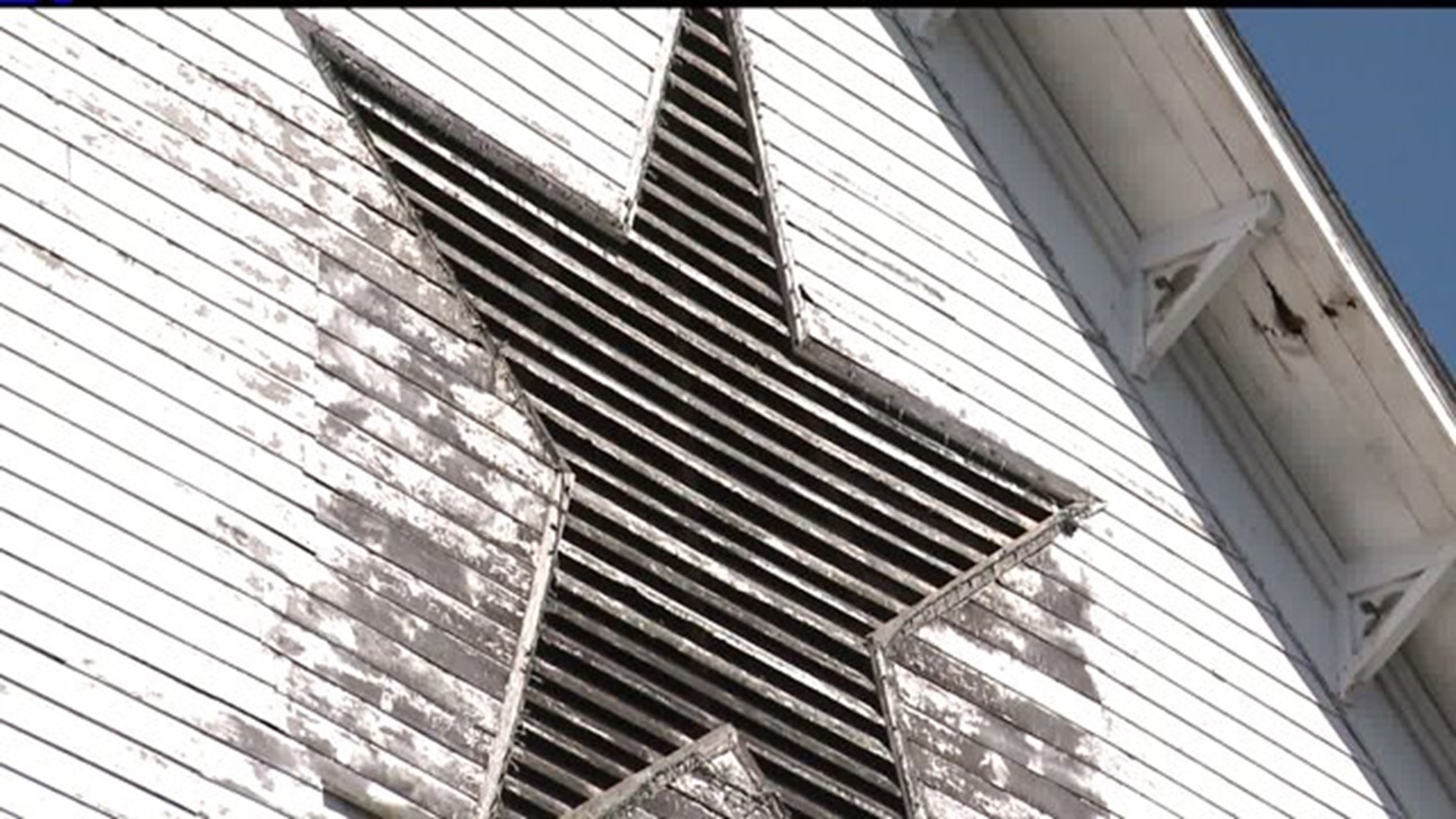LOWER SWATARA TOWNSHIP, Pa. -- Workers stood on mechanical lifts 20 feet in the air, pulling century-old nails out of 400-year-old wood, as Steve Grove sat in a lawn chair, looked up, and admired.
"That's awesome," he said, watching as people worked to take down the iconic Star Barn in Lower Swatara Twp. "I just can't imagine how they did it in the 1870's."
The barn, originally built more than 140 years ago, is moving to a new home. Over the next few months, the structure which currently sits alongside PA-283 in Dauphin County will be taken apart, piece by piece, and will be revived the same way as an event venue at the Ironstone Ranch in West Donegal Township, Lancaster County.
Project managers predict the Star Barn will reopen in May 2018.
As planks of wood were pulled from the barn's facade, Steve Grove grabbed his camera and snapped a few pictures. For him, they will be keepsakes, and a glimpse into his family's past.
Steve's great-great-grandfather, John Z. Grove of Hummelstown, was one of the barn's earliest owners and architects. He purchased the property off John Motter in 1877 for $5,695, according to a Harrisburg Evening News article from 1927.
"[He] never really got any credit," Grove said of his great-great-grandfather. "Even talking to my dad, people back then, they just did what they had to do to survive."
John Grove helped turn the Star Barn into one of the Capital region's most recognizable buildings today. The barn was initially used as a horse ranch for after the Civil War, according to its newest owner David Abel. In the 1920's, it was transitioned into a cattle farm and has sat vacant for approximately 50 years, he added.
As the inside of the building decayed over time, the outside remained strong, causing Abel, a Lancaster County-based businessman, to purchase the complex in 2014 for $150,000.
"I have a vision of what it’s going to be. The beauty of the stone. The beauty of the wood. And when it’s done, it will be a masterpiece. A piece of art," Abel says. "Better than what it was when it was originally built."
The project will take around two years, he says.
Disassembly is a task unto itself, with only around two dozen workers responsible for meticulously taking down a 140-year-old building. Mike Kleinhans, the project's director, says each piece of wood, most of which is around 400 years old by now, will be studied to determine if it's sturdy enough for the new complex.
"We get excited for everything new thing we see here. Whether it’s a corbel or a bracket or a sliding door, anything like that, that’s what keeps us motivated."

